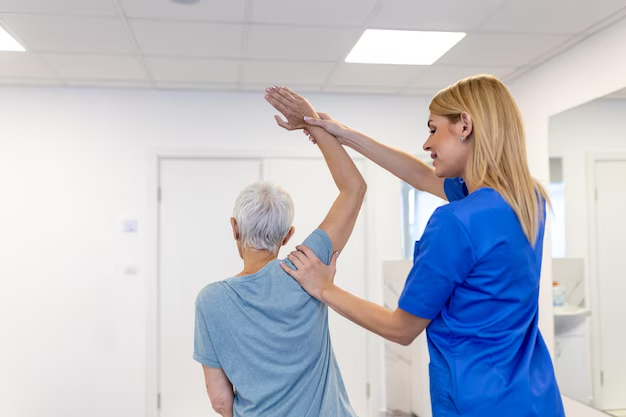Essential Care Strategies for Nursing Clients with Osteoporosis: A Comprehensive Guide
Bone health is something many of us take for granted—until it becomes a concern. For those grappling with osteoporosis, maintaining bone strength is a constant challenge. Osteoporosis, characterized by weakened bones and an increased risk of fractures, affects millions worldwide. Nurses play a critical role in managing and mitigating the impacts of this disease, ensuring patients live active, fulfilling lives. Let's explore the multifaceted approach nurses take when caring for clients with osteoporosis.
Understanding Osteoporosis: A Quick Overview
Before diving into care strategies, it's key to grasp what osteoporosis entails. Osteoporosis is a condition where bones become brittle and fragile due to a loss of tissue. Common symptoms include bone pain, fractures from minor falls, and a stooped posture. While it primarily affects older adults, it isn't exclusive to any age group.
Risk factors include:
- Age: Most common in older adults.
- Gender: Women are more prone to osteoporosis, especially post-menopause.
- Family history: Genetic predispositions can play a role.
- Lifestyle factors: Lack of exercise, poor nutrition, and smoking increase risk.
Understanding these basics allows nurses to tailor interventions effectively, addressing each client's unique challenges.
Engaging Clients in their Care: Building a Trusting Relationship
The nurse-patient relationship is foundational to effective care. Trust and communication help in understanding the client's needs and preferences. Here are a few strategies:
- Active Listening: Encourage patients to express concerns and ask questions.
- Empathy and Support: Recognize the emotional toll osteoporosis can have and provide reassurance.
- Clear Communication: Use simple, non-technical language to explain medical concepts.
Nutritional Guidance: Fueling the Body for Bone Health
Diet plays a pivotal role in bone health. Here’s what nurses might discuss with clients:
Key Nutrients
- Calcium and Vitamin D: Essential for bone strength. Sources include dairy, leafy greens, fortified foods, and sunlight.
- Protein: Supports bone structure. Incorporate lean meats, legumes, and nuts.
- Magnesium and Potassium: Found in fruits and vegetables, these nutrients help maintain bone density.
Practical Tips
- Meal Planning: Encourage balanced meals.
- Supplements: Discuss potential benefits under medical supervision.
- Hydration: Ensure proper fluid intake for overall health.
Encouraging Safe Exercise: Strengthening Bones Safely
Exercise is crucial for osteoporosis management but must be approached carefully to avoid injury.
Types of Exercises
- Weight-Bearing Activities: Walking, dancing, or low-impact aerobics to strengthen bones.
- Strength Training: Use light weights or resistance bands to increase muscle mass and support bones.
- Balance Exercises: Yoga or tai chi to improve stability and prevent falls.
Tips for Safe Exercise
- Warm-Up and Cool Down: Prevent injury and promote flexibility.
- Tailored Routines: Customize exercises based on individual ability and health status.
- Consistency Over Intensity: Encourage regular, moderate activity rather than infrequent intense sessions.
Monitoring Bone Health: Regular Assessments
Part of the nurse’s role includes facilitating regular health check-ups and diagnostics, such as:
- Bone Density Tests: Determine the extent of bone loss.
- Regular Consultations: With healthcare providers to adjust care plans as needed.
Medication Management: Understanding Treatments
Medications can be pivotal in managing osteoporosis. Nurses play an advisory role, ensuring clients understand their treatment plans.
Common Medications
- Bisphosphonates: Slow bone loss.
- Calcitonin: Reduces bone pain.
- Bone-Building Medication: For those with severe osteoporosis.
Tips for Effective Management
- Adherence to Medications: Encourage staying on schedule to maximize benefits.
- Recognizing Side Effects: Educate clients to identify and report adverse effects.
- Coordinating Care: Work with pharmacists and doctors for smooth medication plans.
Preventing Falls: Creating a Safe Environment
Given the fragility of bones in osteoporosis, fall prevention is of utmost importance.
Home Safety Measures
- Declutter and Organize: Remove obstacles that could cause trips.
- Install Supports: Consider handrails in bathrooms and along stairs.
- Check Flooring: Secure rugs and ensure floors are non-slip.
Personal Safety Habits
- Wear Supportive Footwear: Proper shoes provide better grip and support.
- Use Assistive Devices: Canes or walkers as needed to maintain stability.
- Vision Checks: Ensure eyewear is up to date to prevent falls related to poor sight.
Emotional and Mental Health Support: Addressing the Psychological Impacts
Empower clients to address the psychological impacts of osteoporosis by encouraging resilience and a positive outlook.
Coping Mechanisms
- Support Groups: Connect with others facing similar challenges.
- Therapy Options: Consider counseling for anxiety or depression related to the condition.
- Mindfulness Practices: Meditation or relaxation techniques to manage stress.
Educating Family and Caregivers: Creating a Supportive Network
A supportive social environment aids in comprehensive care management.
- Involve Family in Education: Teach them about osteoporosis and care strategies.
- Create a Caregiver Plan: Outline roles and expectations to avoid burnout.
- Encourage Participation: Family participation in consultations and health management planning.
As we've illustrated, managing osteoporosis goes beyond medical treatment. It encompasses lifestyle adjustments, emotional support, and preventive measures, all integral to achieving the goal of healthier living with osteoporosis. Through compassionate care, informed guidance, and strategic support, nurses empower clients to take charge of their bone health and enhance their quality of life.
Quick Tips for Osteoporosis Care 🦴
- Nutrient Focus: Prioritize calcium, vitamin D, protein, magnesium, and potassium.
- Exercise Wisely: Regular weight-bearing and balance exercises.
- Medication Management: Adhere to schedules, monitor side effects.
- Fall Prevention: Secure living environments, utilize assistive devices.
- Emotional Support: Offer access to counseling and mindfulness resources.
- Family Engagement: Educate and involve family members in care.
By following these guidelines, you can create a holistic care plan that supports bone health and overall well-being. 🏥✨

Related Articles
- a Percutaneous Is Performed To Treat Osteoporosis Related Compression Fractures
- Can Alcohol Cause Osteoporosis
- Can I Do Pilates If I Have Osteoporosis
- Can I Reverse Osteoporosis
- Can Men Get Osteoporosis
- Can Osteoporosis Affect Teeth
- Can Osteoporosis Be Cured
- Can Osteoporosis Be Painful
- Can Osteoporosis Be Reversed
- Can Osteoporosis Cause Back Pain